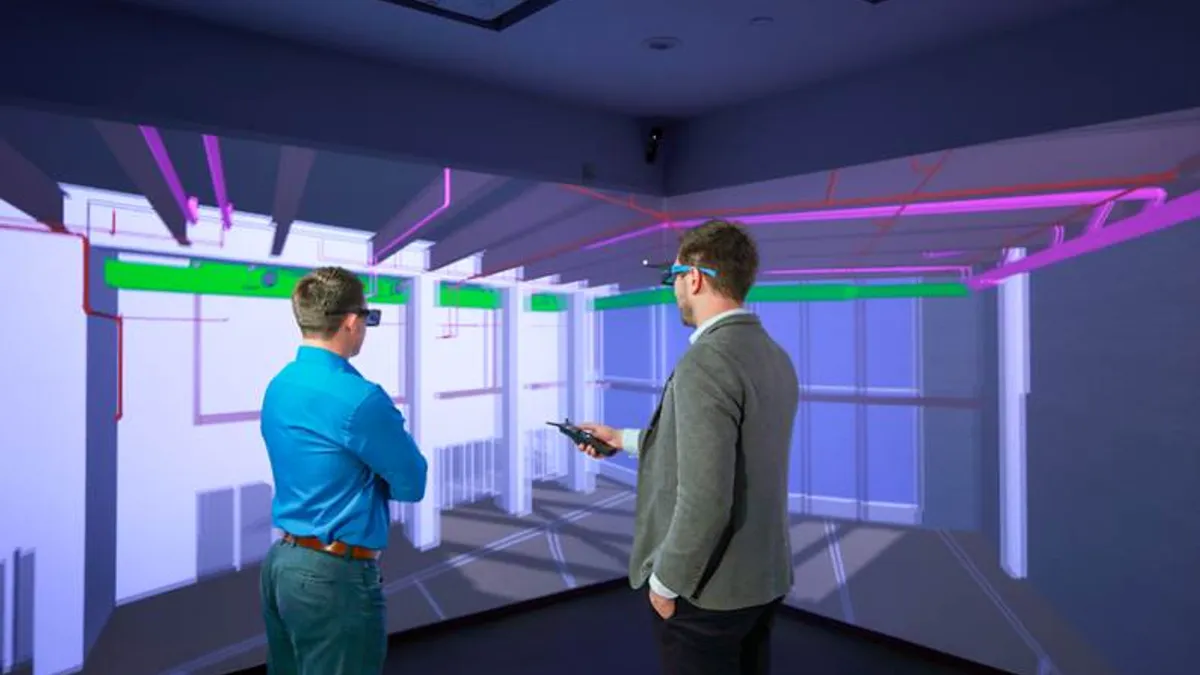Dive Brief:
- National building contractor Suffolk's Smart Lab Computer Aided Virtual Environment (CAVE) element allows clients to immerse themselves in a 3-D representation of a project, reported the Tampa Bay Times.
- The Smart Lab features nine screens along four walls of connected smart boards that measure project progress in a visual flow chart. Steps on the chart transfer to a work schedule displayed on a separate series of smart boards. Those boards dictate each trade partner’s assignment, timing and real-time price estimates.
- Suffolk opened its first Smart Lab in its New York office and is bringing it to its Boston, Los Angeles, Miami, San Francisco and Tampa offices.
Dive Insight:
"It makes an unpredictable industry predictable," Josh Christensen, Suffolk's vice president of west coast operations, told the Tampa Bay Times about the CAVE. Whereas before technological innovations were implemented, clients had to rely on two-dimensional drawings and imagination to "see" their project, CAVE's virtual reality environment enables them to step inside, so to speak, their future building.
Suffolk's Smart Lab, which the company purports will improve efficiency and attendant cost benefits in private and public sector projects, isn't the only virtual reality geared specifically for construction. With the augmented and virtual reality markets expected to see a 98.8% compound annual growth rate through 2021, likely many more developments will follow.
Serious Labs recently introduced its Aerial Virtual Reality Training Simulator to enhance training with scissor and boom lift modules. Meanwhile, a Reno, Nevada, education and training facility is planning to use virtual reality construction heavy equipment simulators in its heavy equipment operator training program.
Late last year, AECOM and tech company HTC signed a memorandum of understanding in which the companies will develop virtual reality technology for the AEC industry. After its initial product testing for HTC's VIVE FOCUS standalone VR headset, developers will produce other VR technologies and capabilities that will help the AEC sector plan, build and maintain structures.
In addition to the increased efficiencies VR and other technologies tout, they also have the potential to improve safety in a notoriously dangerous industry. Some contractors are using drones to more safely gather data. And, although slow to be adopted, of the 13% surveyed contractors who have implemented wearable technology, 82% of them indicate wearables have had a positive impact on jobsite safety.












